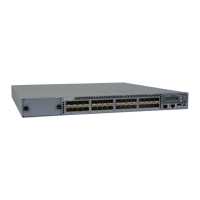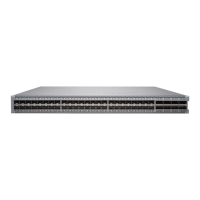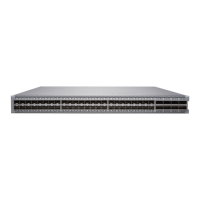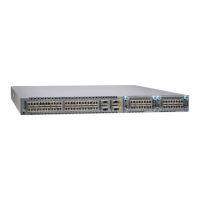NOTE: See the specicaons for your transmier and receiver to nd the minimum
transmier power and minimum receiver sensivity.
2. Calculate the power budget (
P
B
) by subtracng (
P
R
) from (
P
T
):
– 15 dBm – (–28 dBm) = 13 dBm
Calculang the Fiber-Opc Cable Power Margin for EX Series Devices
Before calculang the power margin, calculate the power budget (see
Calculang the Fiber-Opc Cable
Power Budget for EX Series Devices
).
Calculate the link's power margin when planning ber-opc cable layout and distances to ensure that
ber-opc connecons have sucient signal power to overcome system loss and sll sasfy the
minimum input requirements of the receiver for the required performance level. The power margin (
P
M
)
is the amount of power available aer you subtract aenuaon or link loss (
LL
) from the power budget
(
P
B
).
When you calculate the power margin, you use a worst-case analysis to provide a margin of error, even
though not all parts of an actual system operate at worst-case levels. A power margin (
P
M
) greater than
zero indicates that the power budget is sucient to operate the receiver and that it does not exceed the
maximum receiver input power. This means that the link will work. A (
P
M
) that is zero or negave
indicates insucient power to operate the receiver. See the specicaon for your receiver to nd the
maximum receiver input power.
To calculate the worst-case esmate for the power margin (
P
M
) for the link:
1. Determine the maximum value for link loss (
LL
) by adding esmated values for applicable link-loss
factors—for example, use the sample values for various factors as provided in Table 31 on page 107
(here, the link is 2 km long and mulmode, and the (
P
B
) is 13 dBm):
Table 31:
Esmated Values for Factors Causing Link Loss
Link-Loss Factor Esmated Link-Loss Value Sample (LL) Calculaon Values
Higher-order mode losses
(HOL)
• Mulmode—0.5 dBm
• Single mode—None
• 0.5 dBm
• 0 dBm
107

